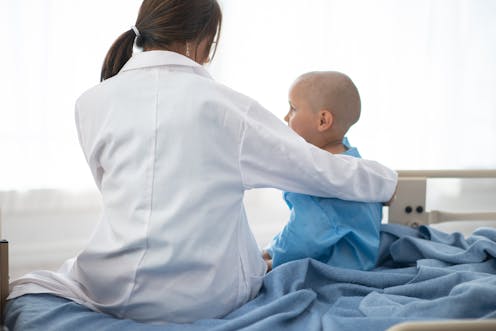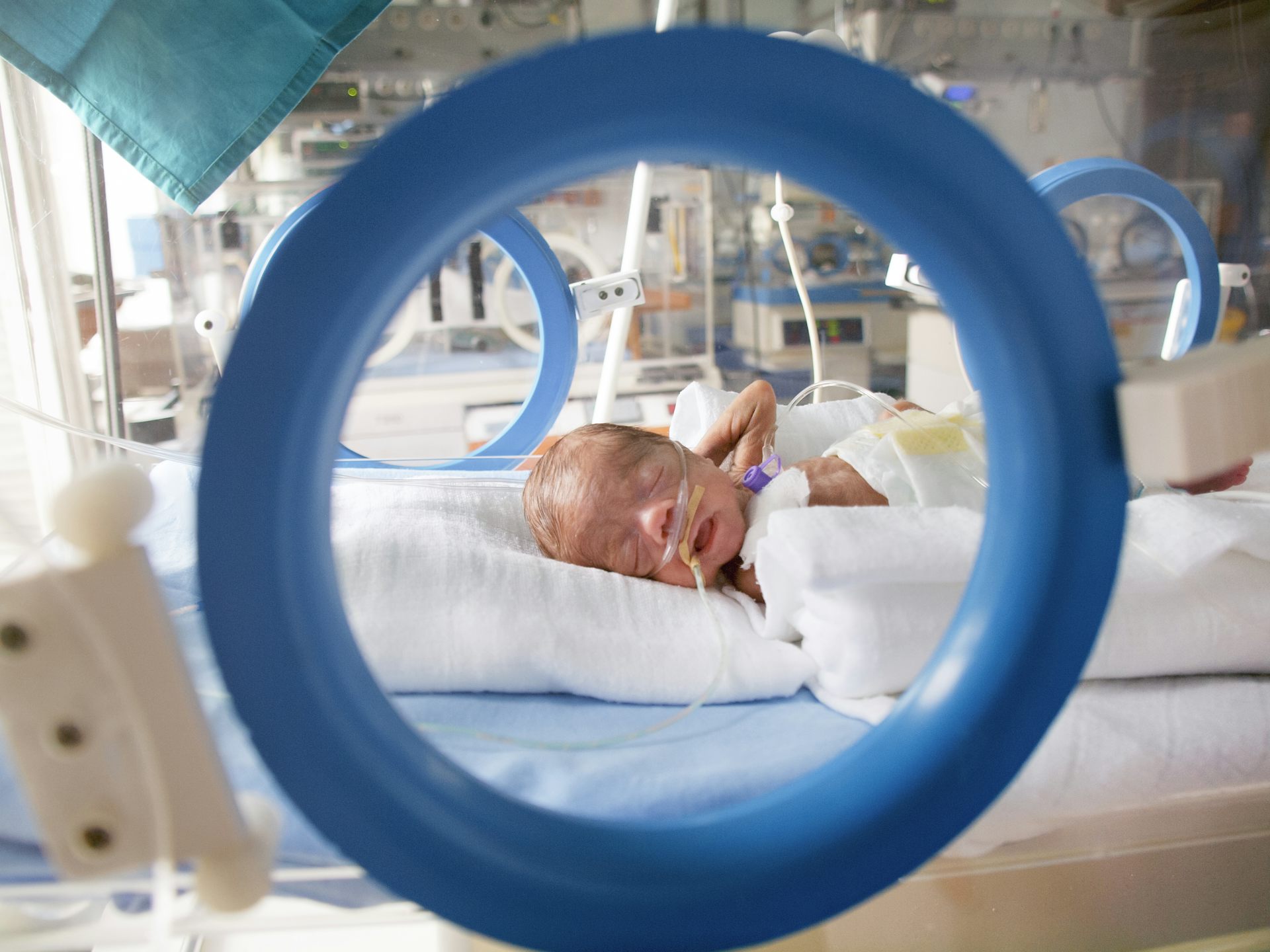Cancer in kids is different from cancer in grown-ups – figuring out how could lead to better pediatr
Children typically haven’t accumulated enough cellular damage to develop cancer. Because their bodies are still developing, pediatric cancers differ from adult cancers in key ways.

Cancer arises when cells accumulate enough damage to change their normal behavior. The likelihood of accruing damage increases with age because the safeguards in your genetic code that ensure cells function for the greater good of the body weaken over time.
Why, then, do children who haven’t had sufficient time to accumulate damage develop cancer?
I am a doctoral student who is exploring the evolutionary origins of cancer. Viewed through an evolutionary lens, cancer develops from the breakdown of the cellular collaboration that initially enabled cells to come together and function as one organism.
Cells in children are still learning how to collaborate. Pediatric cancer develops when rogue cells that defy cooperation emerge and grow at the body’s expense.
Adult versus pediatric cancer
The cells in your body adhere to a set of instructions defined by their genetic makeup – a unique code that carries all the information that cells need to perform their specific function. When cells divide, the genetic code is copied and passed from one cell to another. Copying errors can occur in this process and contribute to the development of cancer.
In adults, cancer evolves through a gradual accrual of errors and damages in the genetic code. Although there are safeguards against uncontrolled cell growth and repair mechanisms to fix genetic errors, aging, exposure to environmental toxins and unhealthy lifestyle can weaken these protections and lead to the breakdown of tissues. The most common types of adult cancers, such as breast cancer and lung cancer, often result from such accumulated damage.
In children, whose tissues are still developing, there is a dual dynamic between growth and cancer prevention. On one hand, rapidly dividing cells are organizing themselves into tissues in an environment with limited immune surveillance – an ideal setting for cancer development. On the other hand, children have robust safeguards and tightly regulated mechanisms that act as counterforces against cancer and make it a rare occurrence.

Children seldom accumulate errors in their genetic code, and pediatric cancer patients have a much lower incidence of genetic errors than adult cancer patients. However, nearly 10% of pediatric cancer cases in the U.S. are due to inherited genetic mutations. The most common heritable cancers arise from genetic errors that influence cell fate – that is, what a cell becomes – during the developmental stages before birth. Mistakes in embryonic cells accumulate in all subsequent cells after birth and can ultimately manifest as cancer.
Pediatric cancers can also spontaneously arise while children are growing. These are driven by genetic alterations distinct from those common in adults. Unlike in adults, where damage typically accumulates as small errors during cell division, pediatric cancers often result from large-scale rearrangements of the genetic code. Different regions of the genetic code swap places, disrupting the cell’s instructions beyond repair.
Such changes frequently occur in tissues with constant turnover, such as the brain, muscles and blood. Unsurprisingly, the most prevalent pediatric cancers often emerge from these tissues.
Genetic alterations are not a prerequisite for pediatric cancers. In certain pediatric brain cancers, the region of the genetic code responsible for cell specialization becomes permanently silenced. Although there is no error in the genetic code itself, the cell is unable to read it. Consequently, these cells become trapped in an uncontrolled state of division, ultimately leading to cancer.
Tailoring treatments for pediatric cancer
Cells in children typically exhibit greater growth, mobility and flexibility. This means that pediatric cancer is often more invasive and aggressive than that of adults, and can severely affect development even after successful therapy due to long-term damage. Because the cancer trajectories in children and adults are markedly different, treatment approaches should also be different for each.
Standard cancer therapy includes radiotherapy or chemotherapy, which affect both cancerous and healthy, actively dividing cells. If the patient becomes unresponsive to these treatments, oncologists try a different drug.
In children, the side effects of certain treatments are amplified since their cells are actively growing. Unlike adult cancers, where different drugs can target different genetic errors, pediatric cancers have fewer of these targets. The rarity of pediatric cancer also makes it challenging to test new therapies in large-scale clinical trials.
A common reason for treatment failure is when cancer cells adapt to evade treatment and become drug resistant. Applying principles from evolutionary biology to cancer treatment can help tackle this.
For example, extinction therapy is an approach to treatment inspired by natural mass extinction events. The goal of this therapy is to eradicate all cancer cells before they can evolve. It does this by applying a “first strike” drug that kills most cancer cells. The remaining few cancer cells are then targeted through focused, smaller-scale interventions.
If complete extinction is not possible, the goal turns to preventing treatment resistance and keeping the tumor from progressing. This can be achieved with adaptive therapy, which takes advantage of the competition for survival among cancer cells. Treatment is dynamically turned “on” and “off” to keep the tumor stable while allowing cells that are sensitive to the therapy to out-compete and suppress resistant cells. This approach preserves the tissue and improves survival.
Although pediatric cancer patients have a better prognosis than adults do after treatment, cancer remains the second-leading cause of death in children under 15 in the U.S. Recognizing the developmental differences between pediatric and adult cancers and using evolutionary theory to “anticipate and steer” the cancer’s trajectory can enhance outcomes for children. This could ultimately improve young patients’ chances for a brighter, cancer-free future.
Ranjini Bhattacharya does not work for, consult, own shares in or receive funding from any company or organization that would benefit from this article, and has disclosed no relevant affiliations beyond their academic appointment.
Read These Next
Winter storms blanket the East, while the U.S. West is wondering: Where’s the snow?
Here’s what snow forecasters are watching, and why skiers and other snow lovers shouldn’t lose hope.
Rural high school students are more likely than city kids to get their diplomas, but they remain les
1 in 5 students in the US are living in rural areas.
Texas cities have some of the highest preterm birth rates in the US, highlighting maternal health cr
Rates of preterm births, maternal deaths and other adverse birth outcomes are abysmal across the US,…





